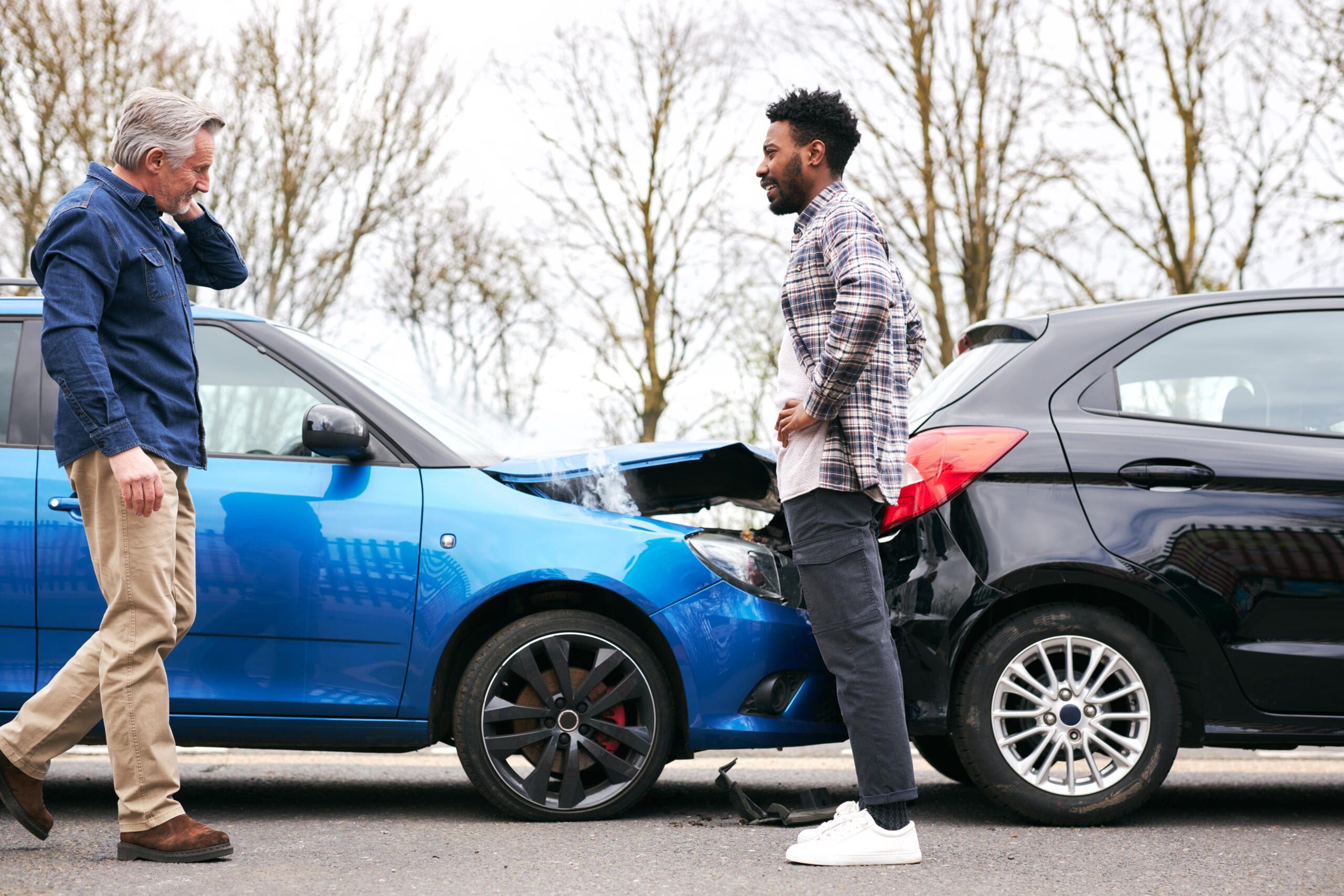When you get into a car accident, figuring out who is responsible can be complex. It often involves more than just looking at who hit whom. Sometimes, both drivers might share some of the blame for what happened. This is where the concept of “comparative negligence” comes into play. It’s a legal principle that helps determine how much each party involved in an accident is responsible for the damages. Understanding this principle is crucial, as it directly influences the compensation one might receive after an accident. Moreover, it highlights the importance of assessing each party’s actions and decisions leading up to the incident.
In this article, we’ll explore what comparative negligence is, how it affects legal liability, and what it means for anyone involved in a motor vehicle accident. By understanding these concepts, individuals can better navigate the complexities of post-accident processes, including insurance claims and potential legal disputes. Additionally, being informed about comparative negligence can aid in making more informed decisions on the road, potentially reducing the likelihood of accidents. Ultimately, the goal is to provide clarity on how fault is determined and how it impacts the outcomes for all parties involved.
What is Comparative Negligence?
Comparative negligence is a legal doctrine used to allocate fault among parties involved in an accident. Instead of one party being completely at fault, the responsibility is divided according to the degree of fault each party holds. This system is used in many states across the U.S. to ensure that the compensation for damages reflects the actual level of responsibility of each involved party. It allows for a fairer distribution of liability, acknowledging that accidents are often the result of multiple factors and actions. This approach provides a more nuanced view of incidents, recognizing the complexity of real-world situations.
Types of Comparative Negligence
There are generally three types of comparative negligence systems that states in the U.S. use:
- Pure Comparative Negligence: In this system, each party can recover damages proportional to their level of fault. For example, if you are 80% at fault, you can still recover 20% of the damages. This approach allows for recovery regardless of the extent of one’s fault, promoting a fair distribution of damages based on specific circumstances. It acknowledges that even those largely at fault may suffer significant losses deserving of some compensation.
- Modified Comparative Negligence (50% Rule): You can only recover damages if you are less than 50% at fault. If you are equally or more responsible than the other party, you cannot claim damages. This rule encourages parties to assess their actions carefully, knowing that excessive fault can bar compensation. It also fosters a sense of accountability, prompting drivers to adhere to safety norms.
- Modified Comparative Negligence (51% Rule): Similar to the 50% rule, but you must be less than 51% at fault to recover damages. This slight variation still emphasizes the importance of being less at fault than the other party to receive compensation. It serves as a critical factor in legal disputes, often becoming a focal point in negotiations and court proceedings.
How Comparative Negligence Affects Legal Liability
When it comes to legal liability in motor vehicle accidents, comparative negligence helps the court decide the amount of compensation each party should receive. Understanding this concept is crucial for anyone involved in an accident, as it directly impacts the settlement. The doctrine ensures that each party’s financial responsibility reflects their actual contribution to the accident, promoting fairness in legal outcomes. Furthermore, it influences how insurance companies handle claims, affecting the speed and efficiency of the resolution process.
Determining Fault
In states that follow the comparative negligence rule, insurance companies or the courts will evaluate the circumstances of the accident. They look at evidence such as:
- Police Reports: These provide an official account of the incident, often highlighting critical details about the accident’s context.
- Eyewitness Accounts: Witnesses can offer unbiased perspectives, clarifying ambiguous aspects of the incident.
- Photos and Videos from the Scene: Visual evidence is invaluable in reconstructing the events leading to the accident, offering concrete proof of conditions and actions.
- Expert Testimony (like accident reconstruction experts): These professionals analyze technical aspects of the accident, providing insights into how and why it occurred.
Each party’s actions leading up to the accident are analyzed to assign a percentage of fault. This assessment is crucial in establishing a fair distribution of liability, which directly influences compensation. By thoroughly examining all available evidence, courts and insurers can make informed decisions, ensuring that justice is served accurately.
Impact on Compensation
The percentage of fault assigned to each party directly affects the compensation amount. For instance, if you are awarded $10,000 in damages but found to be 30% at fault, your compensation would be reduced by 30%, leaving you with $7,000. This reduction reflects the principle that one’s contribution to the accident should proportionately decrease their financial recovery. Understanding this impact is vital for individuals pursuing claims, as it sets realistic expectations regarding potential settlements. It also underscores the importance of minimizing one’s fault through cautious driving and adherence to traffic laws.
Real-Life Scenarios
To better understand how comparative negligence works, let’s look at a few hypothetical scenarios:
Scenario 1: Rear-End Collision
Imagine you are driving and stop at a red light. The car behind you fails to stop in time and hits you. However, if it is found that your brake lights weren’t working, you might be partially at fault. The court might decide you are 20% responsible for the accident. If the total damages are $5,000, your compensation would be $4,000 after the 20% reduction. This scenario illustrates how seemingly minor oversights can impact liability and compensation significantly. It highlights the importance of regular vehicle maintenance to avoid potential reductions in claim settlements.
Scenario 2: Intersection Accident
Consider an accident at an intersection where both drivers claim to have had the green light. If evidence shows that both parties might have been distracted, both could share fault. Perhaps the court assigns 60% of the blame to one driver and 40% to the other. The driver who is less at fault might still recover some damages, but at a reduced rate. This example demonstrates the complexity of assigning fault in accidents involving multiple parties and unclear circumstances. It underscores the role of thorough investigation and evidence in determining a fair allocation of responsibility.
The Role of Legal Representation
Navigating comparative negligence can be challenging, especially when it comes to proving fault and negotiating settlements. This is where having a skilled attorney can make a significant difference. Legal expertise becomes invaluable in deciphering complex legal jargon and processes, ensuring that individuals’ rights are protected throughout the proceedings. Moreover, an attorney’s guidance can streamline the claims process, potentially leading to quicker and more favorable resolutions.
Why Hire an Attorney?
- Evidence Gathering: Attorneys know what evidence is needed and how to obtain it efficiently. They have access to resources and networks that can uncover critical information supporting your case. This thorough approach can significantly strengthen your position in negotiations or court proceedings.
- Negotiation Skills: They have the experience to negotiate with insurance companies for a fair settlement. Attorneys understand the tactics often employed by insurers to minimize payouts and can counter these effectively. Their involvement can lead to more balanced outcomes, ensuring you receive the compensation you deserve.
- Legal Expertise: Understanding complex legal language and processes is their forte, ensuring that your rights are protected. Attorneys can navigate the intricacies of comparative negligence laws, advocating for a fair distribution of liability. Their knowledge is crucial in interpreting how laws apply to your specific situation, offering clarity and direction.
What to Expect from Your Attorney
Your attorney will work to minimize your percentage of fault by presenting strong evidence and arguments. They will also ensure that any settlement or court ruling reflects a fair distribution of liability and compensation. This involves meticulous preparation and strategic negotiation, aiming to secure the best possible outcome for you. Additionally, they provide ongoing support and advice, helping you make informed decisions throughout the legal process. Their role is to be your advocate, championing your interests at every stage.
Conclusion
Comparative negligence is an essential concept in understanding how fault and compensation are determined in motor vehicle accidents. Knowing how it works can help you better navigate the aftermath of an accident and protect your rights. Whether you’re dealing with insurance claims or legal proceedings, understanding your level of fault and how it impacts your compensation is crucial. If you find yourself involved in an accident, consider consulting with a legal professional to guide you through the complexities of comparative negligence and ensure you receive a fair outcome. Being informed empowers you to handle the situation with confidence, potentially leading to more favorable results and a smoother recovery process.
Contact 612-Injured: Minnesota’s Personal Injury Attorneys
If you or a loved one has been involved in a motor vehicle accident and are navigating the complexities of comparative negligence, don’t hesitate to reach out for professional assistance. Contact 612-Injured, Minnesota’s trusted personal injury attorneys, who are dedicated to helping you understand your rights and secure the compensation you deserve. Their experienced team is ready to guide you through the legal process, ensuring that your case is handled with the utmost care and expertise. Call today to schedule a consultation and take the first step towards a fair resolution.



